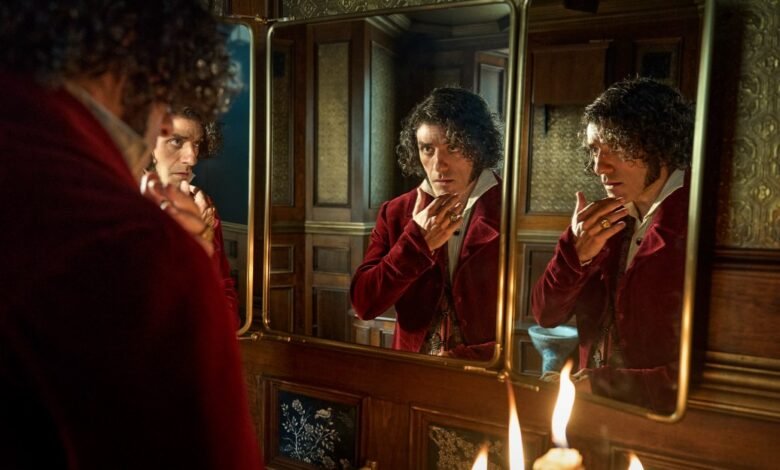Netflix’s Best Movies Deserve a Big-Screen Experience

▼ Summary
– Wake Up Dead Man and other Netflix films at TIFF are praised for their theatrical impact but will have limited cinema releases, mainly in major cities.
– Netflix’s current strategy prioritizes subscription growth over wide theatrical distribution, despite the benefits of cinema immersion for films.
– The author argues that Netflix should offer both theatrical and streaming options to complement each other and enhance film appreciation.
– Films like Guillermo del Toro’s Frankenstein and Ballad of a Small Player showcase visual and emotional elements best experienced in theaters.
– There is precedent for successful dual-format releases from companies like Disney and Apple, but Netflix remains focused on streaming.
There’s something undeniably special about experiencing a great film on the big screen, surrounded by an audience sharing those collective gasps and reactions. Netflix’s most anticipated releases, from the clever twists of Wake Up Dead Man to the gothic grandeur of Guillermo del Toro’s Frankenstein, are crafted with the kind of visual and emotional depth that truly shines in a theatrical setting. Yet for most viewers, the only option will be watching these films at home once they eventually stream.
The streaming giant brought several high-profile projects to this year’s Toronto International Film Festival, including Edward Berger’s Ballad of a Small Player and the acclaimed Sundance selection Train Dreams. While each will see a limited theatrical run, these engagements are typically brief and restricted to major cities like New York and Los Angeles, primarily to meet awards eligibility requirements. For everyone else, the wait for digital availability is the only choice.
This isn’t about claiming one viewing format is superior to the other. There’s undeniable comfort and convenience in streaming, and plenty of films are perfectly suited to home viewing. But certain movies demand more. They thrive on immersion, on the kind of focused, large-scale presentation that only a cinema can provide. What’s being argued is that the two experiences can and should coexist. In the past, hit films enjoyed robust theatrical releases before transitioning to home video. There’s no reason Netflix’s most cinematic offerings shouldn’t do the same.
Consider Guillermo del Toro’s Frankenstein. The film is a feast of production design, with elaborate costumes, haunting creature effects, and richly detailed sets that pull viewers into its shadowy world. These are elements best absorbed without distraction, on a massive screen with powerful sound. Similarly, Ballad of a Small Player draws much of its tension from Colin Farrell’s intensely physical performance, every bead of sweat, every strained expression feels magnified and more impactful in a dark theater.
From a business perspective, it’s understandable why Netflix prioritizes subscriptions over box office revenue. The company’s model is built on attracting and retaining subscribers, not selling individual tickets. Still, there’s a cultural responsibility that comes with producing prestige films. If Netflix wants to be regarded as a true patron of cinema, and its ongoing festival presence suggests it does, it should consider what serves each project best, not just what serves the algorithm.
Many of these films are passion projects from visionary directors, works designed to elicit strong reactions and communal celebration. Del Toro has dreamed of adapting Frankenstein for years. Rian Johnson and Daniel Craig clearly relish the Knives Out universe, feeding off audience energy during premieres. Theaters provide a unique space for that kind of shared appreciation, a ritual that streaming simply can’t replicate.
Other studios have shown that dual release strategies can work. Marvel and Pixar films continue to debut in theaters before moving to Disney+, and Apple has found success with hybrid models, as seen with the Brad Pitt racing drama F1, which outperformed a major superhero film financially before heading to streaming.
Realistically, no one expects Netflix to overhaul its distribution model overnight. The company’s focus remains squarely on subscriber growth, and theatrical releases are often treated as obligatory steps toward awards recognition rather than core offerings. But after spending days immersed in cinema screenings, including several of Netflix’s finest, the power of the shared big-screen experience becomes unmistakable. There’s a magic in gasping together in the dark, a magic that not only enhances the film itself but fuels the desire to revisit it later, even from the couch.
(Source: The Verge)